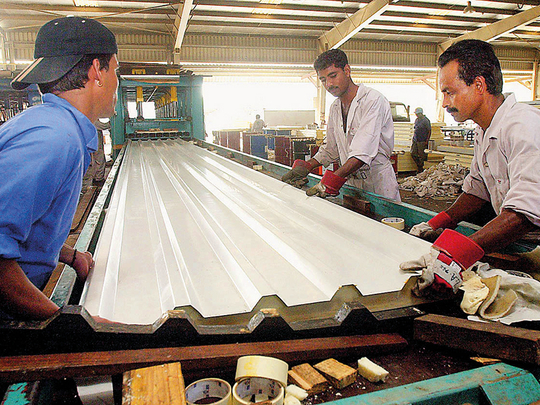
Dubai: The Emirates NBD UAE Purchasing Managers’ Index (PMI) for October showed an improvement in new orders and business confidence in the non-oil private sector despite a marginal fall in the headline PMI Index.
“The headline UAE PMI eased to 55 in October from 55.3 in September. It has been broadly stable between 55 and 56 for the last four months, indicating growth in the UAE’s non-oil private sector at a similar rate to last year, when official GDP data showed the non-oil sector expanded 2.5 per cent,” said Khatija Haque, head of Mena Research at Emirates NBD.
PMI data showed that private sector output growth had slowed to its weakest in six months in October, despite relatively robust new order growth.
Anecdotal evidence suggested that promotions and price discounts likely contributed to the rise in new orders last month. Indeed, new export order growth also slowed sharply last month.
Margins were squeezed further in October as input costs rose while selling prices declined.
Input-cost inflation rose at its fastest pace since April, driven by higher fuel and raw materials prices.
Meanwhile, output prices registered their sharpest decline in three months in October.
Selling prices have declined on average in five of the last six months, as firms have had to compete for new business and also stimulate demand.
“Business optimism about future output rose to a record high in October, with nearly 78 per cent of firms surveyed indicating they expected their output to be higher in a year’s time. The surge in oil prices, as well as announcements of increased government spending and Expo 2020 investment may have contributed to improved sentiment last month,” said Haque.
Employment growth returned during October, thereby ending a two-month sequence of job shedding. Some firms linked the increase to rising output requirements. The rate of growth was only fractional, however.
“Staff costs, a good proxy for wages, were also largely unchanged last month. The softness in the labour market is at odds with output and new work growth. However, the increased margin pressures in October likely contributed to firms’ reluctance to boost hiring,” Haque said.
Reflecting higher output requirements, firms increased their purchasing activity in October. The rate of expansion accelerated notably since September, and was the strongest registered since February.












